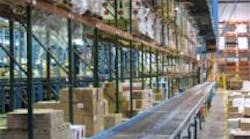Clean storage shelves thoroughly during inventory rotation. When cleaning, pay special attention to the grooves and joints where pests can hide.
Pests are common vectors of foodborne illness, carrying pathogens ranging from E. coli to Salmonella. Excellent sanitation is the first line of defense against pests because it removes many of the food and water sources essential to their survival. Food safety professionals should review their sanitation programs and incorporate these basic steps to help keep facilities clean and pest-free.
- Clean up ingredient spills immediately.
- Eliminate unnecessary moisture.
- Vacuum regularly behind and under equipment and in cracks and crevices.
- Don't forget storage areas.
- Reexamine waste management processes.
- Extend sanitation efforts beyond the building.


